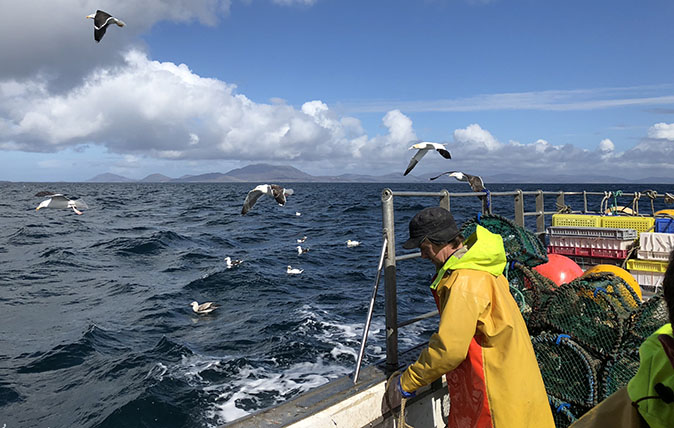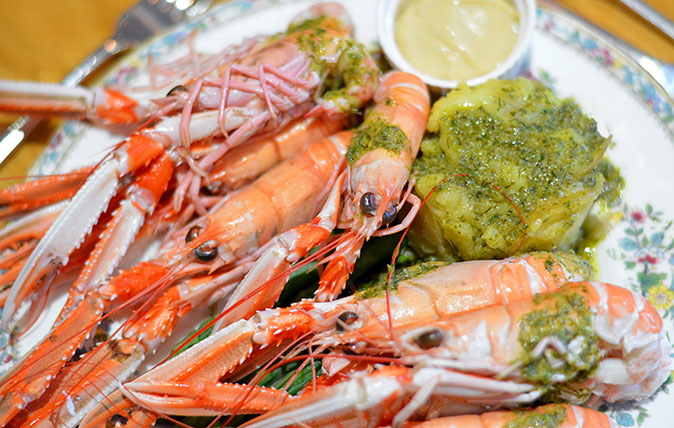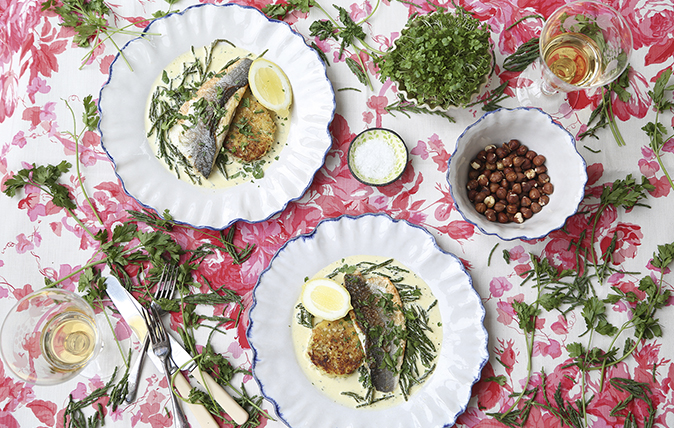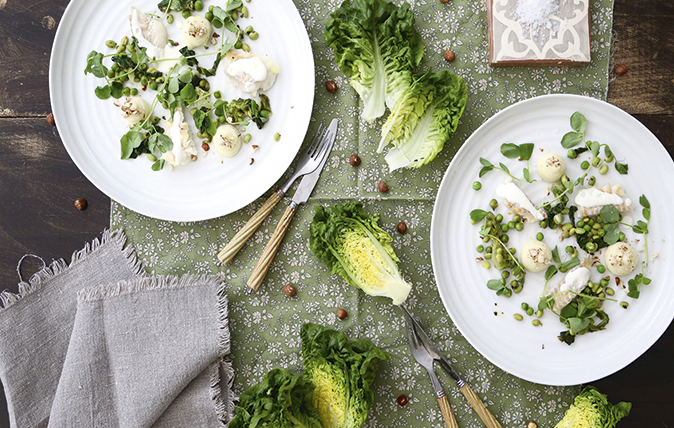Recipe: Langoustines with garlic-and-herb butter and Dijon mayonnaise
Patricia Martin shows us how to make this showstopping dish with a Scottish favourite. Introduction by Mike Warner.


Call it what you will – langoustine, Dublin Bay prawn, Norway lobster or just plain scampi – Nephrops norvegicus is to many as good as it gets when it comes to quality shellfish. A delicate and exquisitely flavoured crustacean, it epitomises everything that a well-structured plate of fruits de mer should be.
Whether the mainstay of chargrilled harbour-side platters, the adornment of paella and zarzuela, gilded in lemon butter or simply served raw, with coriander, lime and olive oil, its sweet flesh is sure to enliven the tastebuds of the most hardened of connoisseurs.
The tide-harried waters of the Minch, that lonely strait of water separating the Scottish Highlands and Inner Hebridean Isles from North Uist, Lewis and Harris, is home to some of the finest examples of this underrated species. With creel fishing and bottom-trawling both playing a large part in harvesting langoustines, shellfishing has been a mainstay of these wild, gale-lashed isles for centuries.

Although langoustine, native lobster and brown crab predominate in terms of landings, the variety of other shellfish species here in abundance (scallop, squat lobster, velvet crab, razor clam) is typical of a coastline royally served by a smorgasbord of planktonic life powered by the Gulf Stream.
Langoustines (prawns, to the local fishermen) are one of those species that now demand the combined effort of both trawlers and potters and whose daily landings are transported to European ports such as Vigo and Santander in Spain. However, with 80% of UK exports destined for that market, it’s small wonder that many of these little orange lobsters don’t make landfall in Britain.

Serves 8
Ingredients
- 80 medium, fresh and live Minch langoustines
- New potatoes (lightly crushed with olives)
- Green vegetables (steamed)
For the Dijon mayonnaise
Exquisite houses, the beauty of Nature, and how to get the most from your life, straight to your inbox.
- 2 egg yolks
- 1 tbsp Dijon mustard
- 350ml groundnut oil
- Juice of half a lemon
For the garlic-and-herb butter
- 2 packs butter
- 4 crushed cloves garlic
- Fennel, parsley, lovage and chervil (a bunch of each)
- Juice of 2 lemons
Method
To make the Dijon mayonnaise, mix the egg yolks and mustard in a large ceramic bowl and gradually whisk in the oil, a drop at a time, until the mixture starts to thicken. As it does so, add the oil in a continuous stream, then season to taste with salt, pepper and lemon juice. Divide between eight ramekins and chill.
Next, melt the butter with the garlic and set aside for a while, before blitzing it together with the herbs and lemon juice, using a hand blender or a liquidiser.
Bring a large pan of salted water to a rolling boil and cook the langoustines in batches of eight – drop them into the boiling water, then cover with a lid. As soon as the water comes back to the boil – which only takes a few minutes – they’re cooked. Set aside and don’t worry about keeping them hot.
Arrange 10 langoustines on each plate and pour the garlic-and-herb butter over the top, then place a ramekin of Dijon mayonnaise alongside them and serve with the crushed new potatoes, olives and vegetables. Remember to provide finger bowls and extra napkins, as picking apart the butter-covered langoustines can be a messy business.

Credit: Melanie Johnson
Pan-fried sea bass with caper-and-anchovy potato cakes, samphire and cream
Our kitchen garden cook reveals a delicious recipe that makes good use of seasonal samphire.

Pan-fried cod with hazelnut mash and braised lettuce with peas and soya beans
Nothing compares to the soft, floppy leaves of a homegrown British lettuce.

Credit: Melanie Johnson
Roasted sea bream with agretti - aka the 'new samphire'
The 'new' samphire.
Country Life is unlike any other magazine: the only glossy weekly on the newsstand and the only magazine that has been guest-edited by His Majesty The King not once, but twice. It is a celebration of modern rural life and all its diverse joys and pleasures — that was first published in Queen Victoria's Diamond Jubilee year. Our eclectic mixture of witty and informative content — from the most up-to-date property news and commentary and a coveted glimpse inside some of the UK's best houses and gardens, to gardening, the arts and interior design, written by experts in their field — still cannot be found in print or online, anywhere else.
